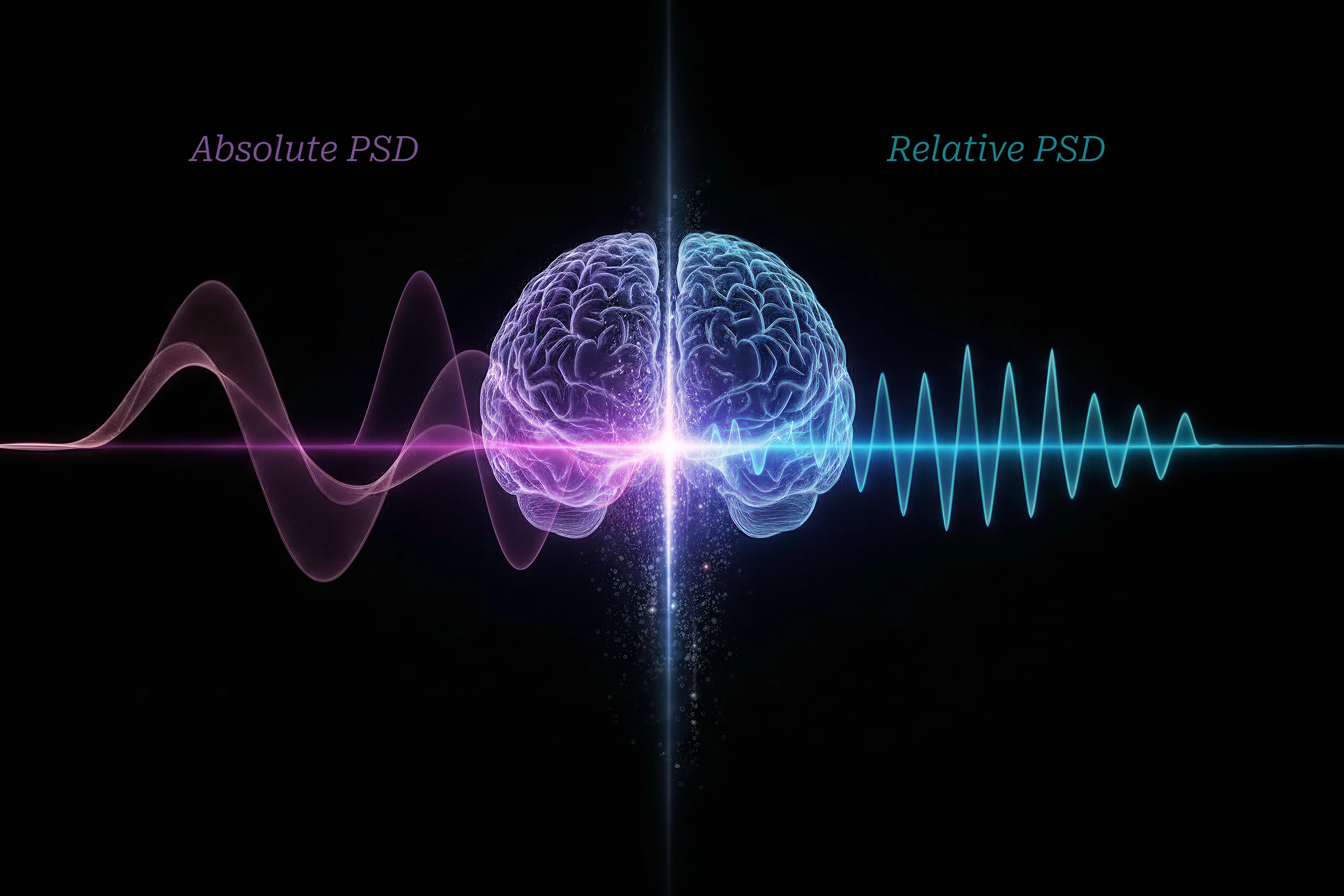This post builds on our previous exploration of Uncovering Structure in EEG Power Spectra Using UMAP, where we examined how different brain states and subjects are represented in the embedding. If you haven’t read it yet, we recommend starting with that article to better understand the context and baseline results.
Read our previous post: Uncovering Structure in EEG Power Spectra Using UMAP
Context & Motivation
When analyzing EEG data, raw Power Spectral Density (PSD) provides valuable information about the absolute energy distribution across frequency bands. However, absolute values can be strongly influenced by inter-subject variability, electrode differences, or overall signal power. A common approach to mitigate these effects is to compute the relative PSD, where each frequency band’s power is normalized against the total power.
Key Question:
Does normalization sharpen separability (clearer states/tasks) or blur distinctions (flattening individual/region differences)?
In this post, we revisit the same dataset and visualization approach as before, but this time we apply UMAP to relative PSD features instead of absolute PSD. By comparing the two embeddings, we aim to understand whether normalization sharpens the separability of states, brain regions, tasks, or subjects, or whether it smooths over distinctions by focusing on relative differences rather than absolute magnitudes.
The UMAP algorithm was applied to the relative PSD using a Euclidean metric, with two output dimensions, 30 neighbors, and a minimum distance of 0.1.
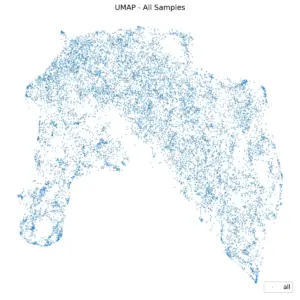
Figure 1. 2-d UMAP of all samples.
Figure 1 illustrates the UMAP, which again presents as a continuous spread rather than forming distinct clusters, even after parameter tuning. Only one small group appears near the left, suggesting that relative PSD, like absolute PSD, varies gradually and continuously rather than separating into well-defined categories.
Eye Open (EO) vs. Eye Closed (EC)
As before, we expected Eye Open (EO) and Eye Closed (EC) states to separate in UMAP space. Figure 2 shows this comparison.

Figure 2. UMAP of Rest data. EC and EO are in different clusters.
In the embedding, the cluster on the left corresponds to EC, while the rest of the space is dominated by EO. A K-nearest neighbors (KNN) classifier (K=10) using these embeddings achieved a balanced accuracy of 78% with 5-fold cross-validation. This outperforms the 74% result with absolute PSD, indicating that relative PSD improves EO–EC separability.
Brain Regions
We then examined whether UMAP reflects differences between brain regions.
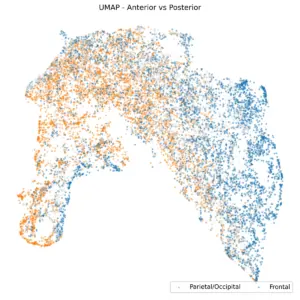
Figure 3. UMAP, based on the brain region.
Frontal channels remain clearly distinct from parietal and occipital channels. A KNN classifier (K=10) using anterior/posterior embeddings reached a balanced accuracy of 78%, slightly lower than the 80% observed with absolute PSD.
Tasks and Subjects
As before, we focused on two tasks, MW and Stroop, using only the six subjects who performed both.
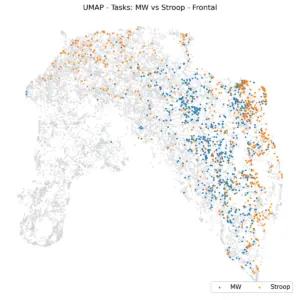 |
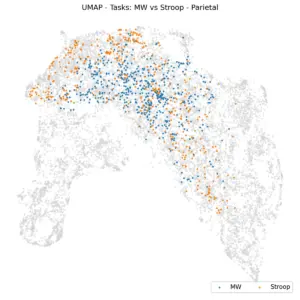 |
Figure 4. UMAP projections based on tasks. Left: Frontal, Right: Parietal.
UMAP embeddings colored by task show clearer separation than in the absolute PSD case. KNN classification achieved 70% balanced accuracy for both frontal and parietal regions, a notable improvement over the previous 61-62%.
Next, we fixed the task to Stroop and examined subject separability.
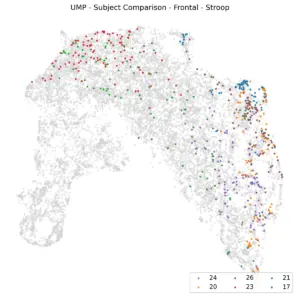
Figure 5. UMAP of frontal Stroop per subject.
Here, subjects formed distinct clusters, with KNN balanced accuracy improving to 54%, compared to 49% for absolute PSD.
Conclusion
Relative PSD strengthens task separability and improves EO-EC distinction compared to absolute PSD. However, for brain regions and subject clusters, the improvements are smaller or even slightly reduced. These findings suggest that normalization emphasizes frequency distribution patterns useful for distinguishing mental states and tasks, while sometimes reducing anatomical contrasts.
Taken together, relative PSD appears to offer a better balance between controlling variability and preserving meaningful distinctions, especially when exploring task effects with UMAP.


